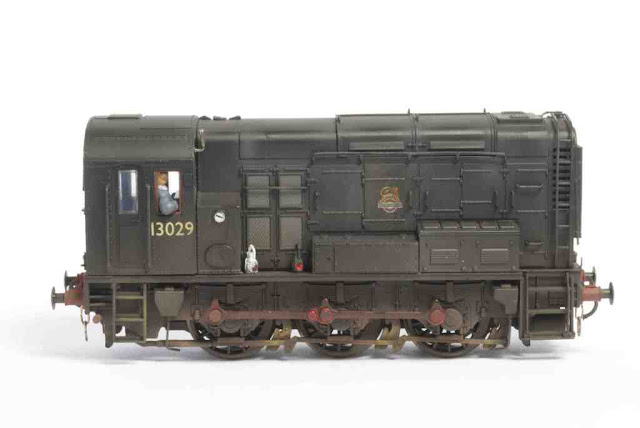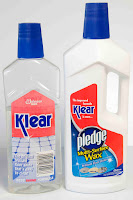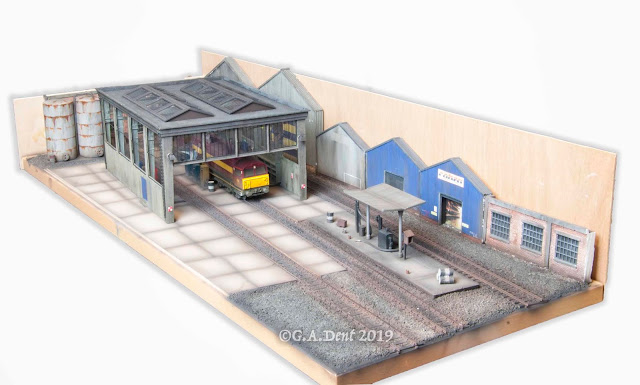GRONK EXTRA

With issues of Model Rail issue 161 fresh on newsagents’ shelves, here’s a selection of images left over from my article on the humble Class 08. This proved to be an enjoyable Masterclass feature to put together, with a number of different takes on the ‘Improve a ‘Gronk’’ theme, including adding DCC to a non-DCC-ready model.
Regular readers of this Blog may recall a number of previous posts on this subject, with a few instalments covering progress on my NCB-branded 08, plus a few other BR machines. I really can’t get enough of these little shunters and can remember buying a secondhand Hornby model (the ancient one with the Tri-ang chassis) when I was a kid. With much perseverance, I got it running pretty smoothly and the bodyshell went through a number of livery changes, from BR blue, to Railfreight grey and then 3-tone sub-sector grey. Then, as I recall, it went back to blue, with Red Star branding. It was in this guise that it chugged off into the model scrapyard after Bachmann introduced their far superior version a couple of years before I started at Model Rail.
I was living in a rented house in East Yorkshire at the time and the landlord had built the basics of a loft layout before he vacated the property, so it was just a matter of laying a circuit of track on his baseboards. To celebrate, I treated myself to an ‘08’ from the NRM’s shop (my staff discount used to come in handy!) plus a handful of coal wagons, and I’d sit happily at my workbench in the attic for hours with this little engine pootling round and round at crawling pace. Happy days!

It’s the small things that add up, such as painting the wooden surround to the cab droplight, plus an oil leak from the engine compartment. Then there’s the shunter’s hook and spare oil lamp on the running board and the scratchbuilt fuel filling pipe under the cab.

Bufferbeams can be improved with a few extra touches, such as a coupling guard, piping between the twin air tanks and cross beam linking the front steps. Nice blobs of grease on the bufferheads help, too.

This black number is one of my favourites. It’s one of Model Rail’s recent limited edition Bachmann models, depicting D3052 in plain black but with wasp warning stripes at both ends. Only a handful of ‘Gronks’ gained the yellow and black ends while still in black, so it makes for an interesting sight on a 1970s-era layout.
You can see how most of these ‘08’s were detailed and weathered – including making my own shunter’s hooks - in the latest Model Rail magazine, out now!






George...do you know anything about using a 9v. battery to power loco wheels for painting/airbrushing? It is not an idea or operation I've ever heard of here in Canada.
ReplyDeleteBTW...D3032 looks smashing!
Cheers
Gene Kruger
Hi Gene,
DeleteThanks for the comment. Yes, you can use a standard 9v battery to move the driving wheels on OO/HO gauge locos and multiple units, just as long as there is power collection on both sides of at least one axle. Indeed, the battery terminals are spaced perfectly for OO/HO, simply touch the wheel with both terminals to make the circuit and the motor will turn over in one direction. To run it the other way, just reverse the terminals.
This is a great tool for moving wheels and coupling rods while weathering or making any adjustments, or for testing a loco before purchase. It even works on DCC-fitted stuff, although there's usually a few seconds' pause before the motor starts turning.
Cheers,
George.
Thanks George...that's exactly the info I was looking for.
ReplyDeleteCheers
Gene